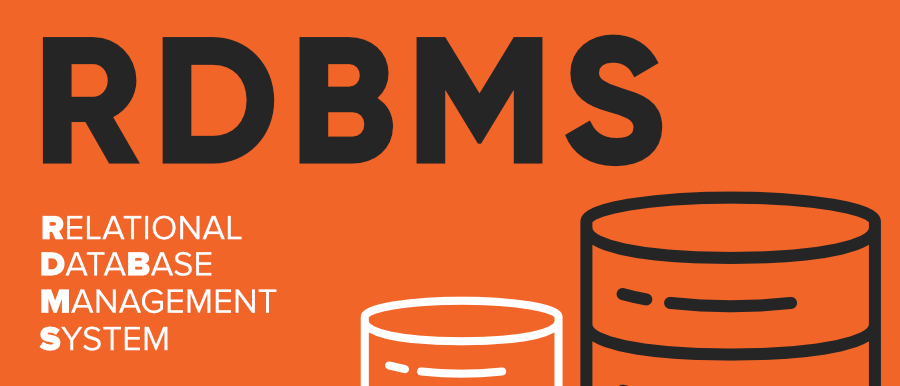A relational database management system (RDBMS) is a type of database management system (DBMS) that stores data in a tabular format, organized into rows and columns. What is RDBMS full form are the most common type of DBMS used today, and they are used to store a wide variety of data, from customer records to financial transactions to product information.
- Introduction
- RDBMS Full Form: Understanding Relational Databases
- RDBMS Full Form: Structure and Components
- RDBMS Full Form: Data Integrity and Constraints
- Querying Data in RDBMS Full Form
- Normalization and Database Design
- RDBMS vs. NoSQL Databases
- Indexes and Performance Optimization
- Security and User Management in RDBMS
- Transactions and ACID Properties
- Conclusion
- FAQs
Introduction



In the vast realm of data management and storage, the Relational Database Management System (RDBMS) stands as a fundamental and widely used concept. Imagine it as a sophisticated digital filing cabinet that organizes information in a structured and logical manner. But it’s much more than just that.
An RDBMS is a specialized software that allows users to define, create, maintain, and manage relational databases. These databases are organized in tables, where each table consists of rows and columns, akin to a spreadsheet. The brilliance lies in the interconnections between these tables, forming relationships that enhance data retrieval and manipulation.
What is RDBMS Full Form RDBMS isn’t merely about storing data; it’s about organizing it smartly and allowing users to access and modify it efficiently. Think of it as a librarian in a vast library, categorizing books by genre, author, and topic, so you can quickly find the book you need.
RDBMS Full Form: Understanding Relational Databases
Imagine a well-organized digital filing system, where information is stored in structured compartments, allowing you to access what you need swiftly and effortlessly. That’s precisely what a relational database is in the world of digital information.
At its core, a relational database is a collection of data organized into tables. Each table is like a category of data, with rows representing individual records and columns representing specific attributes or properties related to those records. For example, think of a table for “Employees” where each row is an employee’s record with columns like “Name,” “Age,” “Position,” and “Salary.”
The beauty of a relational database lies in its ability to establish relationships between these tables. Let’s say we have another table for “Projects” with details about ongoing projects. We can link the “Employees” and “Projects” tables using a common element, such as the employee’s ID, creating a relationship. This allows us to easily associate which employees are working on which projects.
These relationships are the foundation of relational databases, enabling efficient data retrieval, modification, and analysis. They reduce redundancy and inconsistencies, making it easier to manage and maintain large volumes of data.
RDBMS Full Form: Structure and Components
| Aspect | Description |
| Tables | The building blocks of data storage, resembling spreadsheets where data is organized into rows and columns. |
| Rows (Tuples) | Individual data entries, often referred to as tuples. |
| Columns (Attributes) | Characteristics of data, defining the specific data categories for each record in a table. |
| Primary Key | A unique identifier for each record in a table, ensuring that every row can be uniquely identified and aiding in efficient data retrieval and relationships with other tables. |
| Foreign Key | Attributes in a table that link to the primary key of another table, establishing relationships between tables and enabling efficient data retrieval through these connections. |
| Indexes | Data structures that improve data retrieval speed by creating a structured reference to the data. |
| Constraints | Define rules that data in the database must follow to maintain data integrity by ensuring data is accurate and consistent. |
Data Integrity and Constraints
Imagine a well-maintained garden where each plant has its designated spot and growth pattern. Similarly, in a database, maintaining the accuracy, consistency, and reliability of data is akin to nurturing a flourishing garden. This assurance of data quality and reliability is known as data integrity.
1. Data Integrity: Ensuring Accuracy and Consistency
- Data integrity is the principle of maintaining accurate and consistent data throughout the database. What is RDBMS Full Form It ensures that data is reliable, valid, and aligns with predefined rules and relationships.
2. Types of Data Integrity:
- Entity Integrity: Ensures each row in a table is unique, often enforced using primary keys, allowing for precise identification of individual records.
- Referential Integrity: Ensures relationships between tables are maintained by using foreign keys, preventing invalid or “orphaned” references.
- Domain Integrity: Enforces valid data types and permissible values for specific columns, keeping the data consistent and appropriate.
3. Constraints: Rules for Reliable Data
- Constraints are like the guardrails of a database, enforcing rules on the data to maintain integrity. They define boundaries and limitations that data must adhere to, contributing to the overall accuracy and reliability of the database.
4. Common Types of Constraints:
- Primary Key Constraint: Ensures the primary key uniquely identifies each row in a table.
- Unique Constraint: Guarantees that a specified column or set of columns have unique values.
- Foreign Key Constraint: Maintains referential integrity by linking a column to the primary key of another table.
- Check Constraint: Validates that data in a column meets specific conditions defined by the user.
- Not Null Constraint: Ensures that a column cannot have null (empty) values.
Imagine constraints as the rules of the game, dictating how the pieces can move on a chessboard. They ensure that every move (data entry or modification) follows the established rules, resulting in a well-played game (reliable, accurate data).
Querying Data in RDBMS Full Form
| Aspect | Description |
| Understanding Queries | A query is a question you pose to the database, asking for specific data. It’s crafted using a structured language called SQL (Structured Query Language). |
| SQL | SQL is a powerful language designed to communicate with databases. It allows you to retrieve, insert, update, or delete data, as well as define and modify the structure of the database. |
| Basic Query Structure: SELECT Statement | The most common SQL query is the SELECT statement. It retrieves data from a table or multiple tables based on specified criteria. |
| Combining Data: JOIN Clause | JOIN allows you to combine data from two or more tables based on related columns. This is useful for querying information spread across multiple tables. |
| Aggregating Data: SUM, AVG, COUNT, etc. | SQL offers functions like SUM, AVG, COUNT, and more to calculate aggregated values from a set of data. |
| Sorting Results: ORDER BY Clause | You can sort query results using ORDER BY, arranging data in ascending or descending order based on specified columns. |
| Grouping Data: GROUP BY Clause | GROUP BY allows you to group rows with similar data, typically used with aggregate functions. It’s handy for generating summaries and reports. |
| Subqueries: Queries Within Queries | Subqueries are queries embedded within other queries. They allow for complex data retrieval and comparisons. |
Normalization and Database Design
Imagine organizing a messy closet. You sort the clothes by type, arranging shirts together, pants in another section, and accessories in a separate drawer. This process of organizing and arranging, ensuring efficiency and ease of use, is akin to database normalization.
1. Understanding Normalization: Organizing Your Closet
- Normalization is a technique used in database design to organize data efficiently and reduce redundancy. It involves breaking down a large table into smaller, related tables, making it easier to manage and maintain.
2. The Purpose of Normalization: Eliminating Redundancy
- The primary objective of normalization is to eliminate redundancy by dividing the data into multiple related tables. Redundancy can lead to data inconsistencies and inefficiencies.
3. Normal Forms: Stages of Organization
- Normal forms are stages of organization achieved through normalization. Each normal form (e.g., 1NF, 2NF, 3NF) has specific rules that a database must meet to be considered well-organized.
4. First Normal Form (1NF): The Basic Sorting
- Ensures that each column contains atomic (indivisible) values and that all entries in a column are of the same data type. It’s the fundamental step towards normalization.
5. Second Normal Form (2NF): The Categorization
- Extends 1NF by ensuring that each non-key attribute is fully functionally dependent on the primary key. This reduces redundancy and data anomalies.
6. Third Normal Form (3NF): The Distinctiveness
- Goes a step further by eliminating transitive dependencies, ensuring that non-key attributes are only dependent on the primary key and not on other non-key attributes.
7. Database Design: Building a Functional Closet
- Database design involves creating a blueprint of the database structure. It includes defining tables, relationships, keys, and constraints to ensure optimal data organization and retrieval.
8. Benefits of Normalization: Efficient Space and Speed
- Normalization enhances database performance by reducing redundant data storage, resulting in a more compact and efficient database. It also streamlines queries and updates.
RDBMS vs. NoSQL Databases
1. Data Model
RDBMS follows a dependent, tabular information version with information prepared into rows and columns. In contrast, NoSQL databases assist bendy fashions consisting of key-price pairs, documents, wide-columns, and graphs.
2. Schema Flexibility
What is RDBMS Full Form: RDBMS calls for a hard and fast schema described earlier than information entry, which enforces consistency however limits flexibility. NoSQL, however, helps dynamic schemas, permitting information fields to differ throughout records.
3. Scalability
RDBMS usually scales vertically, that means you want to improve your present hardware to address improved load.
4. Query Language
RDBMS Full Form makes use of SQL (Structured Query Language), that is powerful, standardized, and broadly followed for complicated querying. NoSQL databases regularly use non-preferred or specialised question mechanisms tailor-made to their information version.
5. ACID Compliance
RDBMS structures are recognised for sturdy ACID (Atomicity, Consistency, Isolation, Durability) compliance, making sure information integrity. NoSQL databases might also additionally compromise a few ACID homes to attain better overall performance and availability, specially in disbursed structures.
6. Use Cases
RDBMS is good for packages requiring dependent information, complicated relationships, and transactional integrity—consisting of banking structures or corporation ERPs.
7. Performance
RDBMS provides remarkable overall performance for dependent queries and transactions on well-described information sets. NoSQL, however, shines in eventualities concerning high-pace reads and writes throughout disbursed environments.
8. Examples
Popular What is RDBMS Full Form systems consist of MySQL, PostgreSQL, and Oracle, recognised for reliability and strong relational features. In contrast, main NoSQL databases like MongoDB, Cassandra, and Redis are valued for his or her scalability and flexibility.
Indexes and Performance Optimization
1. What Are Indexes?
Indexes are unique facts systems that assist databases discover statistics quicker with out scanning complete tables. What is RDBMS Full Form They paintings like a book`s index, pointing without delay to the facts location.
2. Types of Indexes
There are numerous kinds of indexes, along with B-tree, hash, and bitmap indexes, every designed for unique use cases. B-tree indexes are not unusual place for variety queries, even as hash indexes excel at equality searches.
3. How Indexes Improve Query Speed
Indexes lessen the quantity of facts pages the database reads via way of means of speedy finding rows matching the question criteria. This minimizes disk I/O and quickens SELECT operations.
4. Indexing Strategies
Effective indexing entails choosing columns regularly utilized in WHERE clauses, JOINs, or ORDER BY operations. However, too many indexes can sluggish down write operations and devour garage.
5. Impact on Write Performance
Indexes ought to be up to date each time a row is inserted, up to date, or deleted, which provides overhead to write down operations. While indexes accelerate reads, immoderate indexing can degrade the overall performance of facts amendment commands.
6. Composite Indexes
Composite indexes cowl more than one columns, dashing up queries that clear out out or type via way of means of all the ones columns together. They are specially beneficial for complicated queries concerning more than one seek criteria.
7. Maintaining and Rebuilding Indexes
Over time, indexes can come to be fragmented, decreasing their performance and slowing down question overall performance. Regular maintenance, along with rebuilding or reorganizing indexes, enables repair most fulfilling overall performance.
8. Monitoring Index Usage
Database tracking gear can tune how regularly indexes are used and become aware of the ones which can be hardly ever or by no means accessed. Removing or optimizing unused indexes saves garage area and improves universal database overall performance.
Security and User Management in RDBMS
1. Authentication Mechanisms
RDBMS structures use authentication to affirm person identities earlier than granting get admission to. Common techniques consist of passwords, multi-thing authentication, and integration with LDAP or Active Directory.
2. User Roles and Privileges
Users are assigned precise roles that outline their get admission to stages and permissions inside the database. Roles assist put in force the precept of least privilege via way of means of proscribing customers to handiest essential operations.
3. Access Control Policies
Access manage mechanisms adjust which customers can read, write, or alter statistics. Fine-grained controls permit regulations on the table, column, or maybe row level.
4. Encryption of Data
Data encryption protects records each at relaxation and in transit to save you interception or theft. RDBMS Full Form helps encryption technology along with Transparent Data Encryption (TDE) and SSL/TLS for stable communication.
5. Audit Trails and Logging
Databases hold audit logs to tune person activities, consisting of login attempts, statistics changes, and permission modifications. These logs are critical for detecting suspicious conduct and engaging in forensic investigations.
6. Password Policies
Strong password rules put in force complexity, expiration, and reuse regulations to beautify protection. RDBMS can put in force those rules automatically, prompting customers to replace vulnerable or expired passwords.
7. User Account Management
Administering person bills includes creating, modifying, and disabling bills as needed. Proper control guarantees that handiest cutting-edge personnel or depended on customers have database get admission to.
8. Security Updates and Patching
Regular updates and patches repair vulnerabilities in RDBMS software program that would be exploited via way of means of attackers. Staying cutting-edge with protection releases is vital to defensive towards rising threats.
Transactions and ACID Properties
| Aspect | Description |
| Understanding Transactions | A transaction is a set of actions performed as a single unit to achieve a specific goal within a database. |
| ACID Properties | ACID stands for Atomicity, Consistency, Isolation, and Durability—four essential properties that guarantee the reliability of database transactions. |
| Atomicity (A): The All-or-Nothing Rule | Atomicity ensures that a transaction is an “all-or-nothing” operation. Either the entire transaction completes successfully, or none of it happens. |
| Consistency (C): Maintaining Valid State | Consistency ensures that a transaction takes the database from one valid state to another. The database remains consistent before and after the transaction. |
| Isolation (I): Separating Transactions | Isolation ensures that the execution of one transaction is isolated from other concurrent transactions. It prevents interference between transactions, maintaining data integrity. |
| Durability (D): Permanence of Results | Durability ensures that once a transaction is committed, its changes are permanent and persist even in the event of a system failure. |
Conclusion
In the grand symphony of digital information, the Relational Database Management System (RDBMS) emerges as the conductor, orchestrating the harmony of structured data. It’s a sophisticated tool, not just for storing data, but for organizing it in a way that resonates with efficiency, integrity, and reliability.
In a world where information is a precious asset, RDBMS Full Form empowers us to make informed decisions, build innovative applications, and revolutionize industries. It’s not merely a tool; it’s a catalyst for progress and a cornerstone of modern computing.
As we embrace the era of big data and real-time analytics, RDBMS remains steadfast, evolving to meet the ever-growing demands of a data-driven world. Its story is an ongoing narrative, adapting and innovating, but always rooted in the essence of efficient data management.
FAQs
A Relational Database Management System (RDBMS) is a software system designed to manage and store structured data in tabular form, with rows and columns, and facilitate efficient data organization, retrieval, and management.
The key components of an RDBMS include tables (to organize data), rows and columns (to store data), primary keys (to uniquely identify rows), foreign keys (to establish relationships between tables), indexes (to optimize data retrieval), and constraints (to enforce data integrity).
SQL (Structured Query Language) is the language used to interact with RDBMS. It allows users to create, read, update, and delete data in the database, define structures, and perform various operations such as querying and modifying data.
Normalization is a process in RDBMS to organize the data efficiently by reducing redundancy and dependency by dividing large tables into smaller, related tables. It ensures data consistency and avoids anomalies.
ACID stands for Atomicity, Consistency, Isolation, and Durability. These properties ensure reliable transactions and data integrity in RDBMS.






